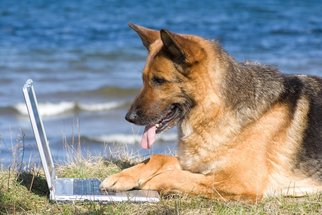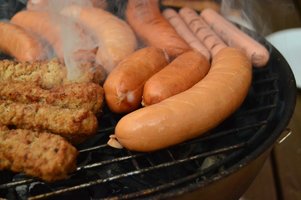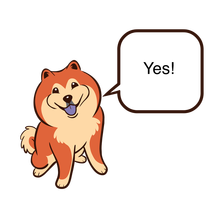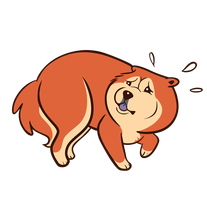by Tracy Krulik
You're not alone. Most people know that the best way to train our pups is to find something that motivates them (like tasty treats or toys if they love to play), and use that to reinforce wanted behaviors. And many people even know that you can use delicious foods to help change dogs' minds about things they might find scary.
But the problem is -- to do it right -- there's a lot more to know. To transform your dog into a beautifully trained, happy pup you need to know what the best trainers in the world know:
To teach your dog to do something (obedience, tricks, etc.):Train with an incremental plan
What's your goal? Teach your dog to sit rather than jump up on someone? Come to you when you call her at the dog park? Lie down in her crate when the doorbell rings?
The first step is to figure out what the goal is. Then figure out what kinds of things will make it harder for your dog. Let's use coming when called at the dog park as an example.
Now that you know the big picture challenges you might face, you can come up with your plan. Something like,
Get the idea? You want to make each step a little more difficult than the one before, but not go straight from kindergarten recalls to PhD-level ones. And along the way, if something is too difficult, see if you can find something in between the step she nailed and the new step that's too challenging. Then when she's got that, you can push forward again. Be generous and use high-value food
Food is a sure-fire motivator. And yet, I still hear things like, "Oh, my dog doesn't like treats. Food doesn't work to train him."
I'll admit: some dogs (like my girl, Emma the Beagle) go gaga for any food any time, and others turn their nose to treats and walk away. But there are ways to get your dog motivated to eat:
"But aren't you just bribing the dog if you use food?" No! We're paying the dog for doing great work. Is your company bribing you with a paycheck? I doubt it. You do your job, and you get paid for it. That paycheck is what motivates you to go to work even on days you would rather be doing anything else. To teach dogs to do things that are kinda maybe silly to them (sit? down? ROLL OVER?!?), we need to give them motivation. That's where food comes in. Get your timing right
You've got seconds (or less!) to let the dog know she did something right. If you give her food after she's moved onto something else, she's learned to do the "wrong" thing. This is the reason trainers use clickers or verbal markers like "yes." The click or the word buys us time.
Here's how it works: Say you're teaching your dog to touch her nose to your hand. You want her to know that "nose touching hand" equals food (not "eyes looking at your hand" or "face moving towards your hand" or "nose touching your hand and then head turning away"). But logistically, she gets the treat after she touches her nose to your hand, so what did she learn? Does she know exactly what she's supposed to be doing? That's where the marker comes in. The very second her nose touches your hand, you click or say "yes." Then she can come off of your hand to get the food and still know that it was moment you marked that you wanted. All that said, you don't have to use a marker for all behaviors you teach, which leads me to... Position feeding
For a behavior like "sit," timing isn't quite so fleeting. As long as her tush remains on the ground, you can give her the reward, even if a few seconds have passed since she first sat down. But if she pops up when you start to hand over the treat, pull your hand back and only pay her when her tush finds the floor once again. It's a great teaching moment. You get double bang for your buck. Now she knows that "sit" means tush hits the ground and STAYS there. (Great stuff for a dog who jumps up on people.)
Positing feeding can also help you move the dog in the direction you want her to go. When you're doing "leave It" training, always feed the dog away from the food you don't want her to eat. She'll get into the habit of walking away from that chicken bone or that pile of (blech) poop, when you say, "leave it," because that's where she's always fed. To help your dog feel good about something:
In this section, we're no longer talking about the dog having to do something to get the food. We're simply trying to create happy associations. Dog is afraid of trucks? Every time he sees a truck, he gets a hot dog party. Dog walks into the vet? A sardine fiesta!!!! (He doesn't have to sit, or look at you, or anything. We just want him to learn over time that the vet equals deliciously stinky noms.)
1:1 Ratio
In order to create the strongest association possible, we have to pair the delicious food to the thing he's scared of every single time. We weaken that important association every time he sees a loud scary truck and doesn't get any hot dog. We want it to be crystal clear: TRUCK = FOOD. TRUCK = FOOD. TRUCK = FOOD... "Oooh, I think I might actually like those trucks. THERE'S ONE! Bingo! I mean HOT DOG! Ah whatever. Give me noms... There's a truck! Did you see?!?"
Whatever your dog is afraid of, if you want to help him overcome it, make sure that you are ready to throw him a little food party any time he spies that scary thing. Fear is incredibly slow to overcome, so put yourself on the fastest road to success: SCARY THING = TASTY TREATS. EVERY. SINGLE. TIME. Get the order of events right
Let's use our truck example:
If you start feeding Barko the hot dogs before he ever sees the truck, he may never make the association. He absolutely has to see it first, and then you can start the party. Then as soon as the truck is gone, the party's over. Every time. Avoid competing "stuff"
Does your dog run to you when you crinkle the bag of treats? Well, he's figured out that BAG CRINKLE = FOOD. If you crinkle the bag before he sees the truck, he might not make the association between the truck and food. He might focus only on that crinkle.
There are a couple ways to deal with this:
Other things that might tip off your dog to the wrong thing:
This post is a part of Companion Animal Psychology's annual #Train4Rewards blog party. Big thanks to Zazie Todd, Ph.D., for organizing this wonderful event.
13 Comments
Amy the foster of fearful beagles
6/14/2017 09:09:40 pm
Thanks for sharing this great article & your knowledge. We've been working on introducing the back door to our fearful beagle. She normally uses the door to garage to come /go outside. It's taken 3 weeks of guiding her closer (literally by inches) & rewarding her with yummy chicken. Tonight she started to follow our dogs to the back door & I was ready with the yummies! It was a beagle feast & she was wary but the weeks of positive reinforcement paid off. I know it will take weeks before she's comfortable with the new door but we're doing a happy dance🐶🍗
Reply
6/15/2017 09:26:16 am
Thanks, Amy! You're doing such wonderful thing for all those Beagles. Isn't it amazing to watch fearful pups come out of their shells? It's kind of addicting!
Reply
Jenny Haskins
6/16/2017 06:02:12 am
Beagles!!!! (Yes they ARE foody dogs :-( )
Reply
6/16/2017 08:10:31 am
Emma the Beagle says, "Wut?!? Beaglez r real dogz 2!!!" :)
Reply
Jenny Haskins
7/8/2017 08:06:56 pm
I have Mad Millie because of her penchant for taking off into the wild blue yonder given half a chance. She tends to do what the other dogs doo, and since they are all well behaved, she is slightly less likely to take off. When I used to own guinea pigs, they would wheek the second they heard the crinkle of grocery bags or the whoosh of a fridge door being opened. So it makes sense that dogs and cats could also associate prep sounds with food. I like your step-by-step approach on how to avoid competing stuff.
Reply
6/16/2017 02:15:04 pm
Thanks! Yeah, these methods work for all animals. They're the same techniques used for performance animals and also to get animals in zoos to participate in veterinary exams and procedures. It's absolutely incredible to see a walrus open his mouth wide for a dental exam. :)
Reply
Janice Zazinski
7/7/2017 11:00:24 am
Great article! Explains the process and rationale so well. We have a fearful, reactive rescue dog that we've been working with for 3 years now. She does something funny when she sees something that scares here (random person, etc.) -- sometimes she will react badly (and I think we thus need to go back to square 1 working on this) but she sometimes looks at us first, waiting for her delicious treat for not reacting. I don't want to not reward the "checking in" behavior (we have been teaching her to "check in" at random times -- just to look at us) but wonder what's going on with that.
Reply
7/7/2017 01:14:14 pm
Hey Janice,
Reply
Janice Zazinski
7/7/2017 02:14:01 pm
Thanks for the quick reply! She tends to react outside when a person or dog passes us very closely... living in a suburb sometimes I just can't avoid that and I think need to be quicker with a fistful of yum.
Janice zazinski
7/7/2017 02:59:17 pm
Everything we do we learned from our fabulous behaviorist and trainer, Adria Karlsson 😍
Reply
Jenny Haskins
7/8/2017 08:54:27 pm
Of course Millie has learned to discriminate. She's not dumb. But she DOES love running even more than food. And she KNOWS that the dogs next door leave their un-finished bones around. And who knows what other dogs she might meet up with in her travels.
Reply
Your comment will be posted after it is approved.
Leave a Reply. |


